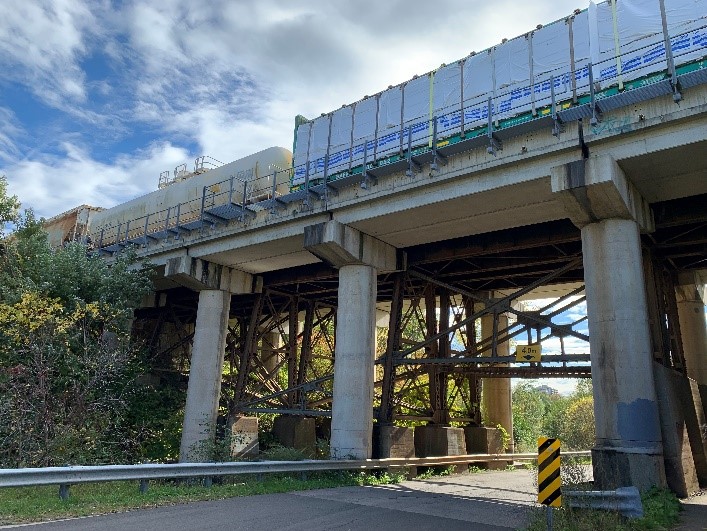By Ivy Le, Anthony Salemi, Sophia Ngai, Ethan Cleugh, Mitchell Jones, third year Toronto Metropolitan University planning students
As the automobile began to dominate in the mid-20th century, cities had to proactively find space to accommodate the increasing number of cars. Parking minimums were introduced through zoning to ensure that new developments had enough parking, by requiring a certain amount of parking spaces per residential unit or amount of commercial floor space. While this satisfied the goal of storing cars, cities currently struggle with high levels of underutilized parking, affordability, environmental crises, all while trying to shift modes of transportation. Parking minimums no longer serve the purpose they once did, and have now created numerous problems; for example, each parking spot can cost up to $100 000, which is passed down to the homeowner or renter, exacerbating the issue of affordability. The environmental, social, and economic issues caused by high levels of parking can no longer be ignored; parking minimums need to be reformed or eliminated.
As part of our third year studio project at Toronto Metropolitan University School of Urban Planning, we worked with the West End Home Builders’ Association (WE HBA) to provide background research and set the table for a conversation about parking minimums in Hamilton and Burlington. First, we conducted a North American jurisdictional scan and literature review, in which we evaluated the impacts of parking minimums and explored how other North American cities eliminated or reduced their parking requirements. For example, Edmonton has completely eliminated parking minimums from their zoning to allow residents and developers to provide the amount of necessary parking. We evaluated current conditions in Hamilton and Burlington to identify and assess the potential challenges and opportunities of parking minimum reform.
Hamilton and Burlington are growing cities — with large transit investments on the way — facing big problems with affordability and successful creation of complete communities. Thus, we developed a vision for the future, and opportunities for implementation:
Current parking provisions are not aligned with the goals and objectives of planning policies that Hamilton and Burlington have set as they grow and change. Representing an outdated image of cities, mobility, and automobile dependence, parking minimums are unsustainable, restrict growth, and are expensive. To adapt to evolving contexts and address current urban issues, parking minimums should be reformed to achieve complete communities. Parking reform will empower residents, businesses, and developers to provide the right amount of parking which best serves their communities.
Our study focused on a series of principles for parking reform, summarized as follows:
- First, reform to parking minimums will improve housing affordability and supply, as each parking spot comes with large costs that are passed down to residents.
- Accessibility can be increased through human-scale built form. By providing only the necessary number of spaces, we can avoid overestimating necessary parking.
- Parking reform should be enacted in conjunction with providing and improving mobility modes available to the public, where reform promotes the development of denser, mixed-use, complete communities.
- Sustainability can be improved with higher and better use of land; as well, environmental impacts can be mitigated.
- Alongside parking reform, it is vital that myths are dispelled, communication is encouraged, and the synchronization of the entire regional development is emphasized.
Building on the guiding principles, Burlington and Hamilton should start thinking about how parking requirements may be reformed in our communities.
- A first scenario is the elimination of requirements along major transit lines, MTSAs, and downtown areas, where less parking can be supported through active and public transportation.
- Next are pilot projects, such as ward or neighbourhood-wide lifting of minimum parking restrictions. Through small-scale implementation, the merits of parking reform can be explored in a real-world scenario.
- Third, a context area approach; for example, an area in the downtown core with high density and high accessibility to public transit would fit into the “transit area” context, where parking requirements would be the lowest in the entire municipality, if not completely eliminated.
- Lastly is city-wide elimination, where all parking minimums are removed through both municipalities.
Stakeholders such as the West End Home Builders’ Association will continue the dialogue on parking reform through education and advocacy. We have provided them with a sample tool for how to do so below:
Cities such as Hamilton and Burlington are facing many challenges, and are seeking to become more walkable, complete communities. Current parking minimums established in zoning are outdated and stifle compact, dense development, create unaffordability and exacerbate environmental issues. Moving forward, Hamilton and Burlington should reevaluate parking minimums to create welcoming, inclusive cities, for all to live and prosper. Following our advice outlined in the full report you can review here, WE HBA will be starting the conversation on parking reform this summer.




